Best Coding Practices to Improve Performance and Readability of Go Applications
Author(s): Pallavi Priya Patharlagadda
Abstract
The Go programming language, often referred to as Golang, is a popular open-source programming language developed by Google. Go has gained significant popularity in recent years for its simplicity, efficiency, and strong support for concurrent programming. Go is a statically typed, compiled language intended for writing code that is clear and easy to maintain. Go blends the ease of use of dynamically typed languages with the performance and security advantages of statically typed languages. Go is a popular choice for developing command-line tools, data processing pipelines, and scalable and high-performance web servers because of its features. Following best practices is crucial to guaranteeing code quality, readability, and project success as Golang programs scale in size and complexity. In this article, we shall explore the significance of Golang best practices, their crucial role in software development, and the plethora of benefits they bring to both developers and projects.
Introduction
Go is a statically typed, concurrent, and garbage-collected open- source programming language created at Google in 2009. It is designed to be simple, efficient, and easy to learn, making it a popular choice for building scalable network services, web applications, and command-line tools. The semantics of these open-source programming languages are similar to those of C and Java. Go language promises code efficiency that translates into faster software and apps for businesses. Many Companies recognized the need for lean and efficient code and adopted Golang as their programming language.
Problem Statement
Writing effective code is crucial for developers to create programs that perform well. Go provides developers with a unique opportunity to create effective applications because of its simplicity and performance-focused design. It takes effort and knowledge to write safe and clean code for any project. To safeguard applications against security risks and vulnerabilities, secure coding standards are crucial. It is critical to follow best practices to guarantee code quality, readability, and project success as Golang applications grow in size and complexity. Best practices are tried-and-true methods, procedures, and coding standards that have been upheld over time by experienced programmers because of both their learnings and mistakes. They have proven techniques that make it easier to write code that is straightforward, scalable, highly performant, efficient, resilient, and maintainable. Using these techniques would make it easy to read code and reduce the likelihood of bugs. In this article, we will discuss some essential tips for writing clean code in Go that would help in creating high- quality, maintainable code.
Advantages of go language
- Fast: Golang is a compiled language. The code written in Golang compiles into bytecode that runs directly on the This is faster than executing the code in interpreted languages. Faster execution times result in high-performance applications that process large volumes of data. The execution speed of Golang meets expectations even at high loads. Go quickly performs complex calculations, which is especially important for products based on AI, in particular, Machine Learning.
- Easy to Learn: The fact that Golang is easy to learn is just another reason to utilize Software engineers can easily use Go, especially if they already have a strong foundation in C or Java. Programmers would quickly become accustomed to Go's procedural approach, even though the syntax and keywords may differ slightly.
- Concurrency: One of the biggest advantages of Go is its high The Goroutines are lightweight functions that can be independent and run together. Since Goroutines are non-blocking, they can handle numerous concurrent methods with a memory footprint of just two kB. In theory, users can execute millions of Goroutines without seeing any system crashes or issues. These Goroutines are managed by Go runtime. For messaging between Goroutines, channels are used. This preserves the order of processing requests and prevents blocking. To block the execution of certain functions until the group of goroutines is completed, wait groups are used. WaitGroups provides the synchronization.
- Efficient Memory Management: Efficient memory management is important for large-scale applications that deal with large volumes of data. Go runtime provides a default and optimized Garbage collection Go`s automated garbage collector manages memory allocation and deallocation. Like other languages, Garbage Collector doesn't stop the execution of the application while performing Garbage collection. It runs alongside applications like other goroutines. Hence, Developers can focus on the coding and need not think about memory leakage.
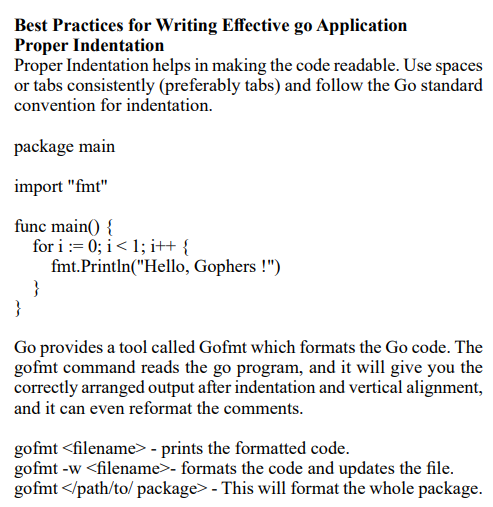
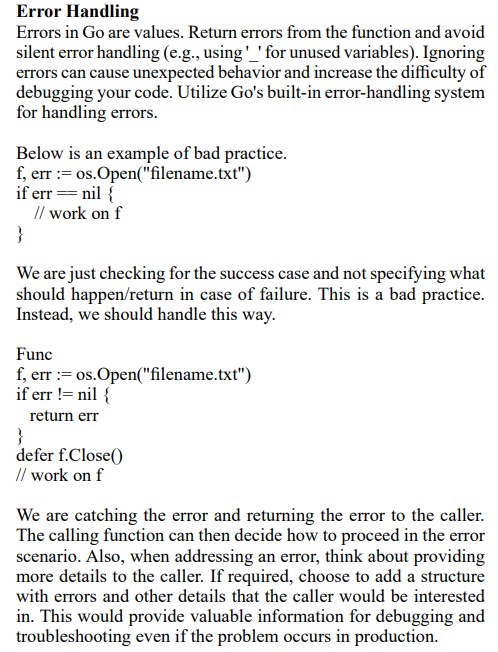
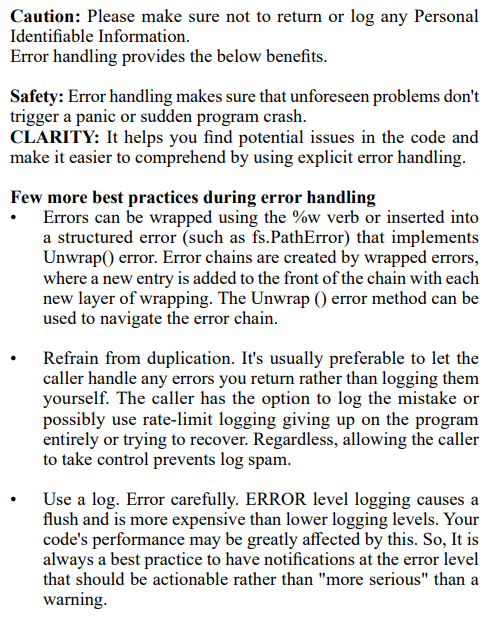
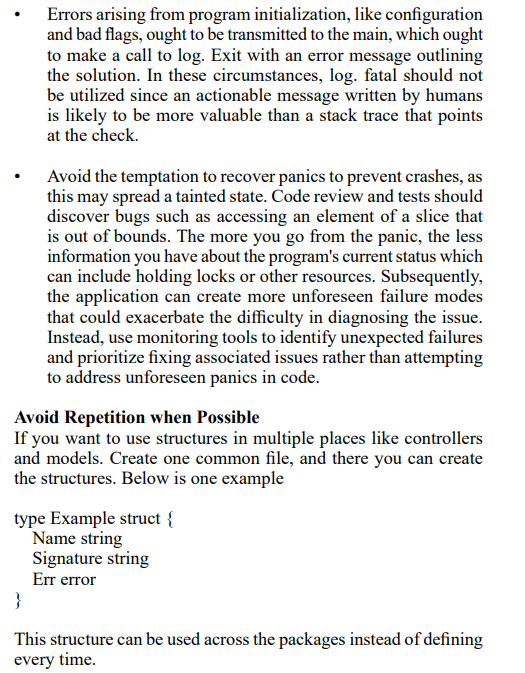
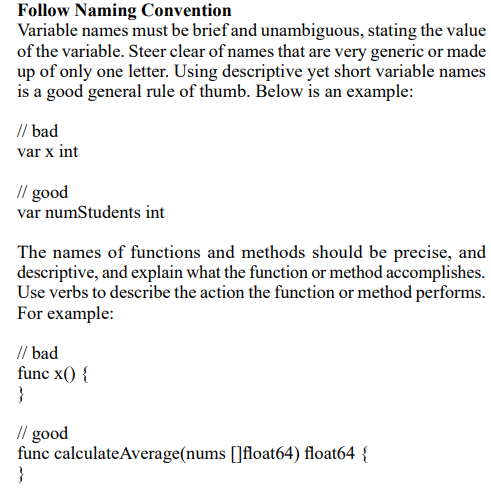
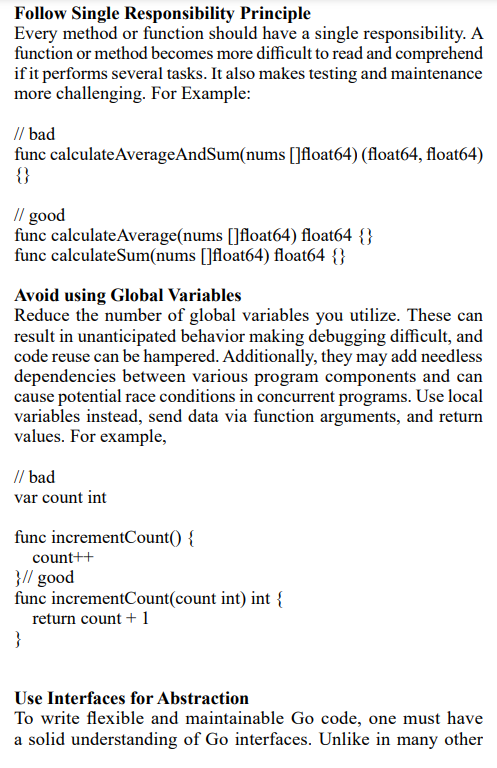
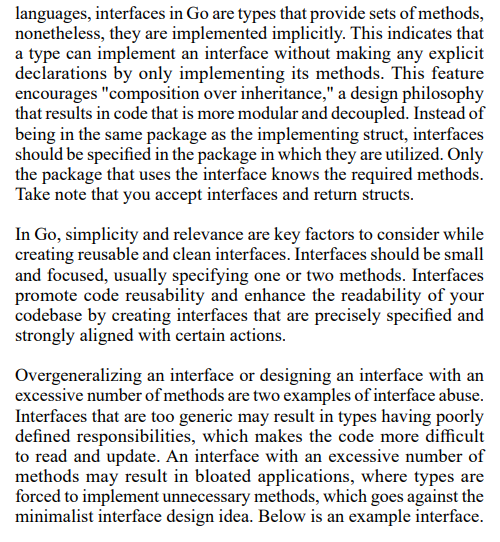
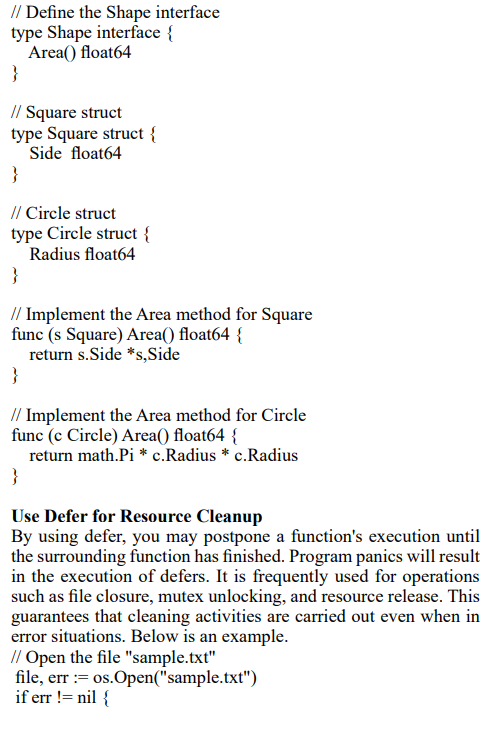
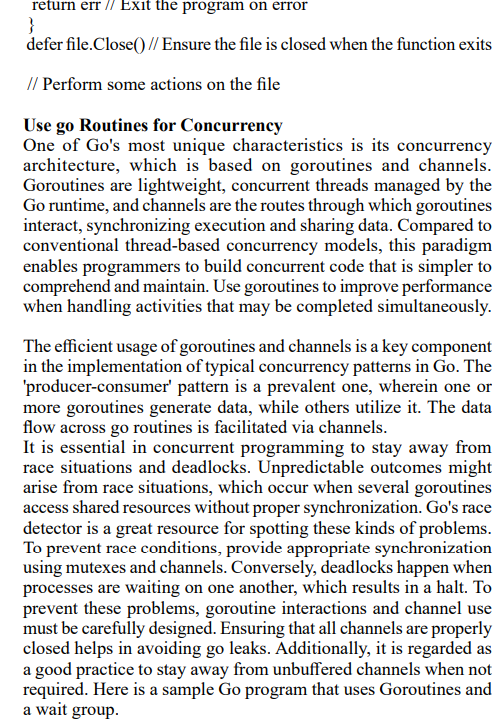
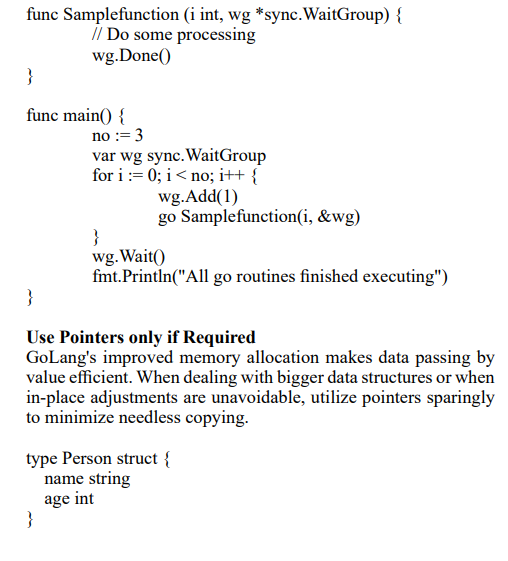
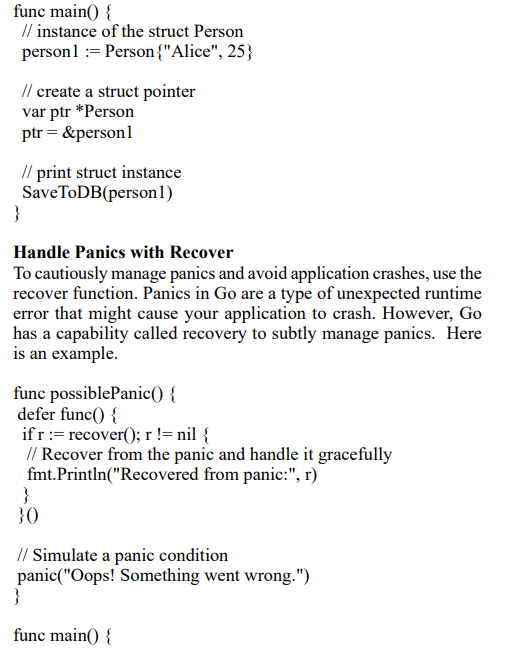
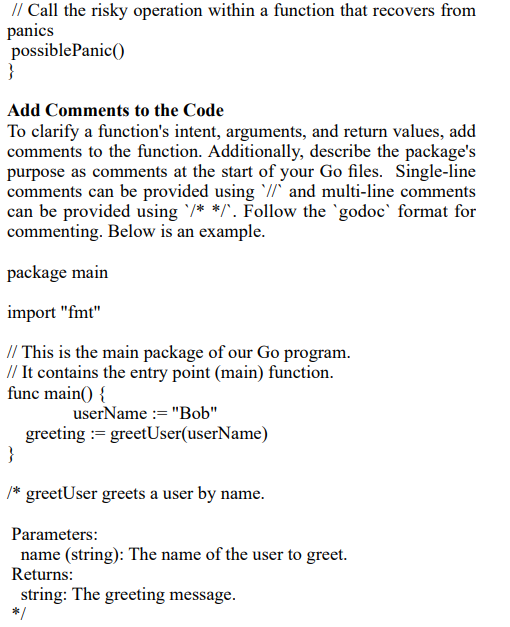

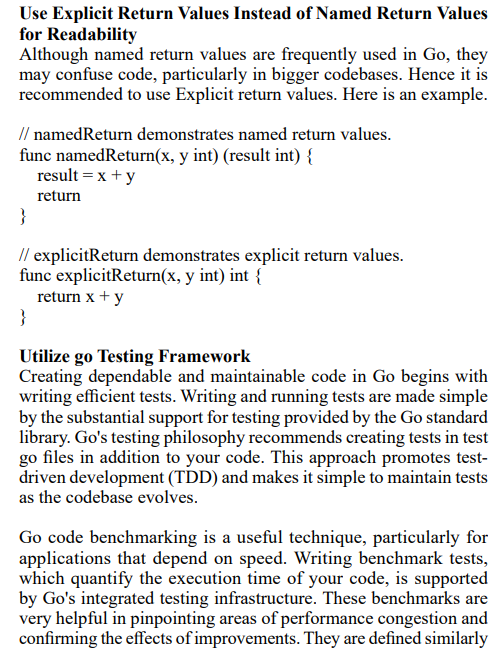


CONCLUSION
A thorough grasp of GoLang's design principles and best practices is necessary to write effective code. By sticking to idiomatic code patterns and applying benchmarks and profiling tools, developers may ensure that their systems operate effectively and give optimal performance. It is important to maintain a balance between readability and efficiency, as too intricate optimizations may result in less maintainable code. These best practices are intended to help you write more reliable, manageable, and effective Go code. They range from effective usage of goroutines and appropriate error handling to performance optimization. Keeping code legible, simple, and manageable is the fundamental goal. Go places a strong emphasis on writing readable code that is straightforward and succinct rather than complex. Keeping this in mind can help you make choices that are consistent with Go's design principles [1-30].
References
- https://go.dev/doc/effective_go
- https://go.dev/doc/code
- https://google.github.io/styleguide/go/best-html
- https://medium.com/@golangda/golang-quick-reference-top-20-best-coding-practices-c0cea6a43f20
- https://medium.com/thirdfort/go-best-practices-how-to-code-comfortably-60118a27def8
- https://go.dev/talks/2013/bestpractices.slide#1
- https://github.com/pthethanh/effective-go
- https://codefinity.com/blog/Golang-10-Best-Practices
- https://www.cloudbees.com/blog/best-practices-for-a-new-go-developer#andrew-gerrand
- https://aptori.dev/blog/go-secure-coding-best-practices
- https://dave.cheney.net/practical-go/presentations/qcon-china.html
- https://blog.stackademic.com/best-practices-in-go-golang-writing-clean-efficient-and-maintainable-code-dccf61542b57
- https://mobidev.biz/blog/golang-app-development-best-practices-case-studies
- https://hyperskill.org/learn/step/24920
- https://www.codingexplorations.com/blog/writing-efficient-go-code-best-practices-for-performant-and-idiomatic- programs
- https://peter.bourgon.org/go-best-practices-2016/
- https://golang.withcodeexample.com/blog/introduction-to-golang-best-practices/
- https://gochronicles.com/writing-go-code-like-a-pro/
- https://xenonstack.com/insights/best-practices-of-golang
- https://dev.to/apssouza22/golang-best-practices-4fnk
- https://thegodev.com/best-practices-and-conventions/
- https://golangdocs.com/golang-best-practices
- https://levelup.gitconnected.com/10-essential-tips-for-writing-clean-code-in-golang-2d78245a6f40
- https://clouddevs.com/go/deploying-applications/
- https://tutorialedge.net/golang/go-project-structure-best-practices/
- https://www.mytectra.com/tutorials/golang/best-practices-and-tips
- https://www.uptech.team/blog/why-use-golang-for-your-project
- https://shaharia.com/blog/writing-clean-and-efficient-code-in-go/
- https://www.linkedin.com/pulse/how-write-high-performance-code-golang-using-go-routines-kevin-zhou/
- https://careerkarma.com/blog/golang-best-practices/
View PDF
















